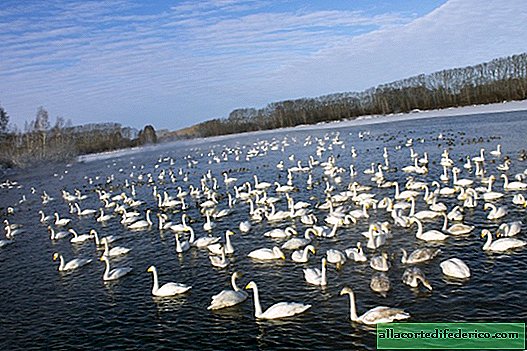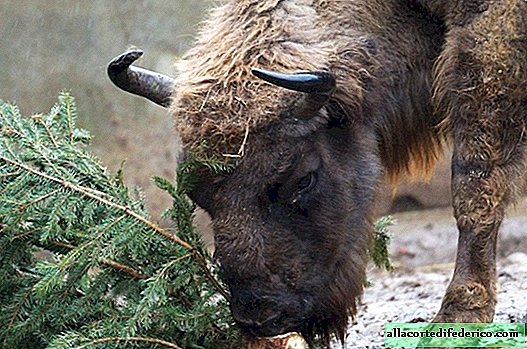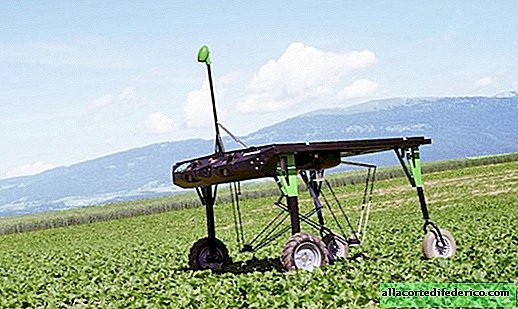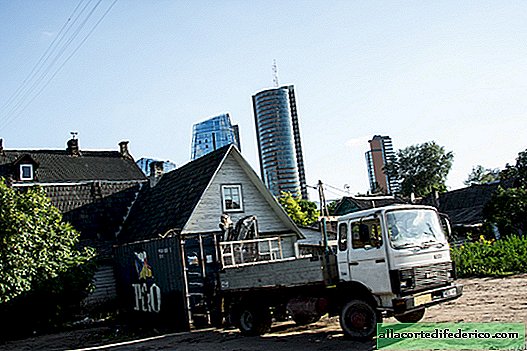Swans preferred wintering in harsh Siberia over flights to warm countries
Whooper swans are magnificent creatures, rightfully considered one of the most beautiful birds on the planet. They relate to migratory species. That is, they mostly nest and breed chicks in the polar regions abundant in fodder resources, and spend the winter in southern countries, mainly in eastern China, Japan, on the coast of the Caspian Sea, in western and southern Europe. But there are some daredevils among them who prefer to winter in Siberia, where temperatures drop to 20-25 degrees below zero, and in some years even lower.

How is this possible? It turns out that in the vastness of Siberia there are several non-freezing lakes, the largest of them are Svetloye with an area of 26 hectares and Swan with an area of 48 hectares. They are located in the foothills of Altai, in the Soviet district of the Altai Territory. Warm springs constantly beat at the bottom of these lakes, and the water temperature does not fall below plus 4-6 degrees even in the most severe frosts. It was them who were chosen for winter by whooper swans. Than to fly to such a distance as Japan or the southern coast of the Caspian, this population, numbering 400-600 individuals, remains to winter in the warm lakes of Altai. According to scientists, the start of these amazing wintering could be an unsuccessful flight, when one of the groups of swans was forced to make a stop on the way. Perhaps, because of the late departure or the winter that came too early, the swans could not reach the south and they were sheltered by the Altai warm lakes. It is hard to say when exactly this happened, but the number of wintering swans is increasing annually. To protect these amazing birds in the 70s of the XX century, the reserve "Swan" was created. Today it is the most popular place for swan wintering in Russia.

Ornithologists believe that swans come here from different places, as they are divided into several groups and keep apart. Adults have a pure white color, and this year's chicks are distinguished by a gray-brown plumage. Birds arrive for wintering in November, presumably from the northern regions of the Tyumen region. Here they feed on lake microorganisms and aquatic plants. The workers of the reserve regularly feed swans with grain and legumes. Over the years, swans have become accustomed to people and have a favorable attitude to the employees of the reserve and thousands of tourists who come to enjoy this miracle. In addition to quick swans, about 2000 ducks and other representatives of the tundra avifauna fly to the lake. Here they are provided with a warm winter and free food. On frosty days, due to the temperature difference between the water and the surrounding air, a thick fog hangs over the lake.
The first half of the day, swans, as a rule, spend on the lake, feed and communicate with fellow tribesmen. And after lunch, they prefer to fly to keep warm and stretch their wings. But starting in March, these magnificent birds are preparing for a long flight to the north. And at this time they almost cannot be found on the lake; they spend all day in training flights, so that they can hit the road in early April. They fly away, but every autumn they return to Altai, where scientists, tourists, photographers and simply connoisseurs of beauty are waiting for them.


















